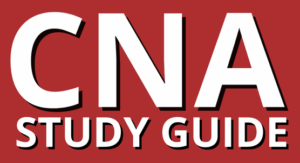This chapter emphasizes the critical role of infection control in the Certified Nursing Assistant (CNA) profession. It introduces infection control as both a vital safety practice and a core exam topic, portraying it as a daily protective barrier for CNAs and their patients.
Understanding Infection Control and Pathogen Transmission:
Pathogens spread through direct and indirect contact, droplets, and airborne particles. Breaking the chain of transmission is essential, and CNAs must understand how infections move through these routes to implement proper prevention techniques.
Hand Hygiene:
Handwashing is highlighted as the most effective way to stop infection. Proper handwashing (20 seconds minimum) and hand sanitizer use are discussed as fundamental, life-saving actions.
Personal Protective Equipment (PPE):
PPE such as gloves, gowns, masks, and goggles function as the CNA’s physical barrier against infection. The correct sequence of donning and doffing PPE is stressed to prevent contamination.
Standard Precautions:
These are basic, universal guidelines applied to every patient, covering hand hygiene, PPE, and safe injection practices. They form the foundation of safe care in all settings.
Isolation Protocols:
When standard precautions aren’t enough, isolation is used. Types include contact, droplet, and airborne isolation, depending on the pathogen. CNAs must understand and follow these to protect themselves and others.
Environmental Cleaning and Sharps Disposal:
Disinfection of surfaces, especially high-touch areas, is essential. Cleaning removes dirt; disinfection kills germs. Proper disposal of sharps in designated containers helps prevent injuries and disease transmission.
Incident Reporting:
Prompt reporting of exposure to bodily fluids or needle sticks is crucial for timely evaluation and response, ensuring CNA safety and enhancing institutional protocols.
Building a Culture of Safety:
CNAs are urged to promote a collaborative environment where infection control is a shared duty. Education, communication, and adherence to protocols support a safe workplace.
Principles of Infection Prevention:
The chapter introduces the “chain of infection” model with six links: infectious agent, reservoir, portal of exit, mode of transmission, portal of entry, and susceptible host. By disrupting any of these links, CNAs can stop infection spread. Real-world metaphors—like knights defending a castle or sealing drafts—help visualize these roles.
Patient and Self-Care:
Education is part of CNA duties—encouraging patients to understand and engage in infection control. CNAs must also care for themselves to provide optimal care, emphasizing rest, hydration, and mental readiness.
Conclusion:
Infection control is portrayed not merely as a checklist, but a mindset of vigilance and compassion. It’s about integrating habits that safeguard lives and elevate the care standard.

